Onorina Botezat & Lorin Niculae
On September 8-9, Bucharest hosted the members of the Cost Action CA18126 Core Group for a two-day gathering. The purpose of the meeting was two-fold: to evaluate the results of the project and to discuss future opportunities for expanding the Writing Urban Places community.
The project evaluation sessions were held at the Council Room of the University of Architecture and Urbanism “Ion Mincu” (IMUAU), on the first day. The university’s leadership attended the meeting, including the director of the Doctoral School, Angelica Stan, the dean of the Faculty of Architecture, Horia Moldovan, and the rector of the University, Marian Moiceanu. Klaske Havik, the Chair of the Action, presented the project results and its potential for continuation in a public meeting. The session was moderated by Lorin Niculae, member of WG3, vice dean of the Faculty of Architecture and president of the Association ArhiPera, the event’s local organizer.
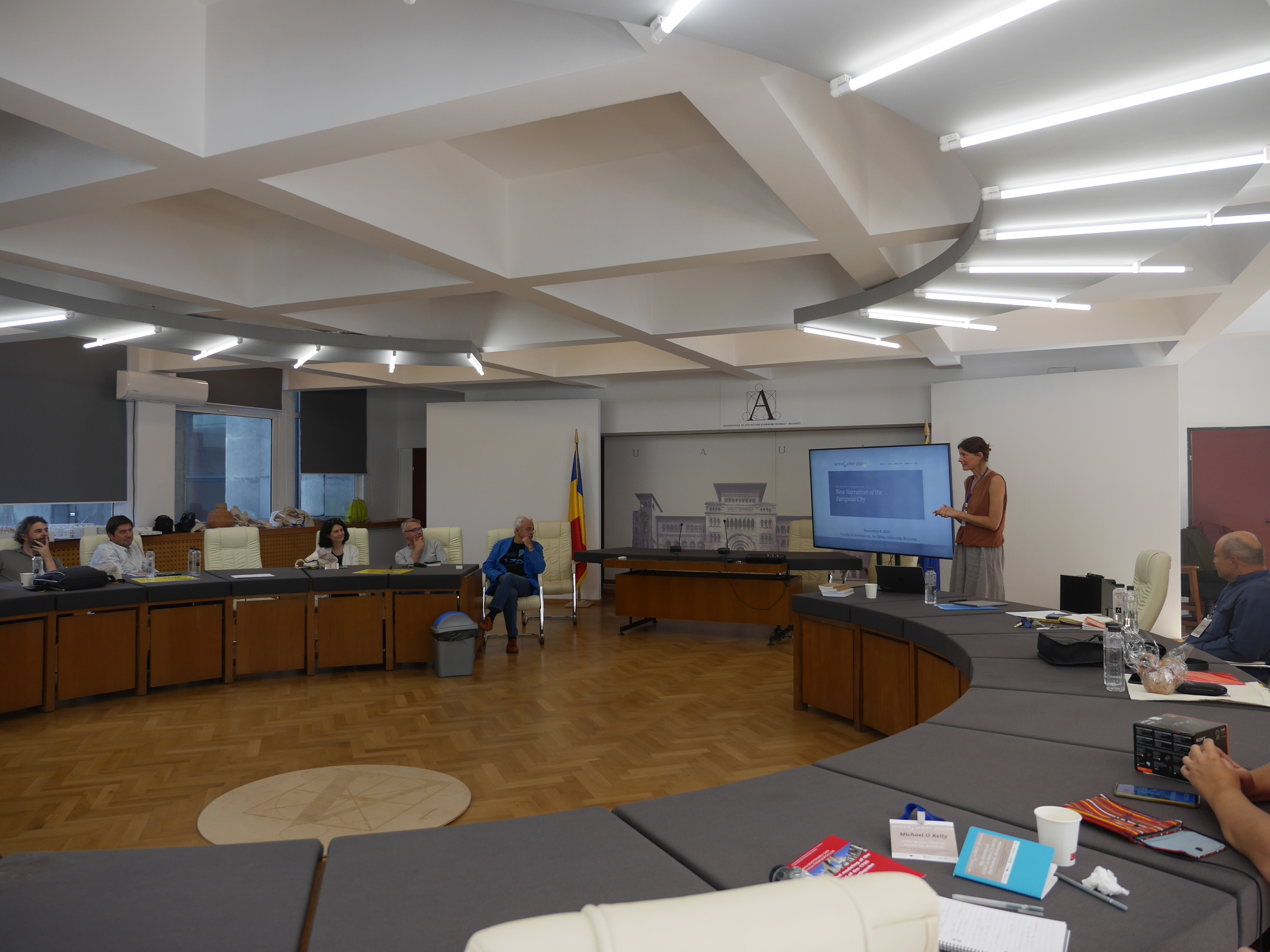
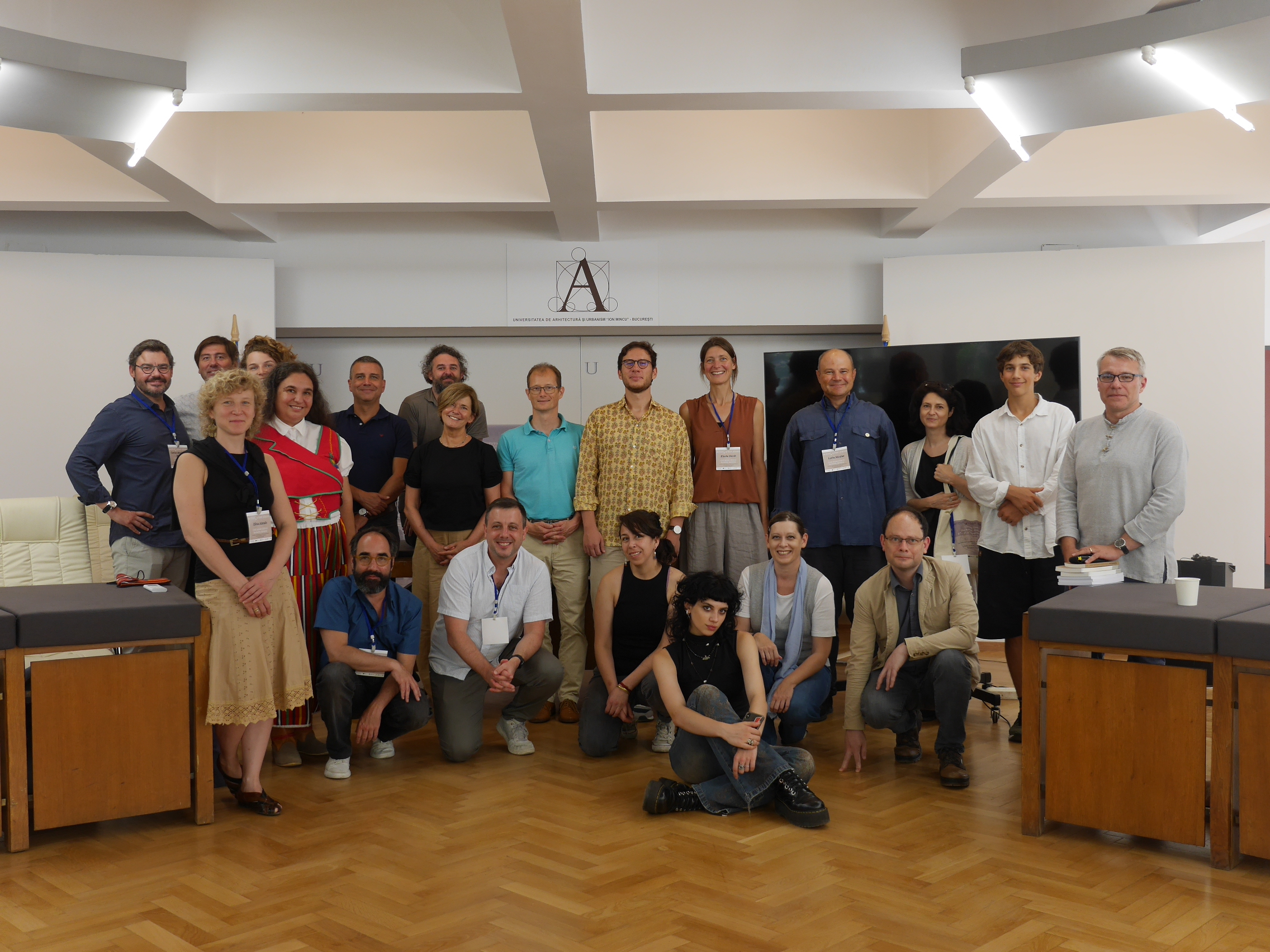
Credits: Arhipera Team (@asociatia_arhipera)
At the end of the first part of the day, the organizers offered a tour of the “Ion Mincu” University. This university is the main and oldest institution in Romania that trains architects and urban specialists and traces back to 1892 when it was established as the School of Architecture by the Society of Romanian Architects.
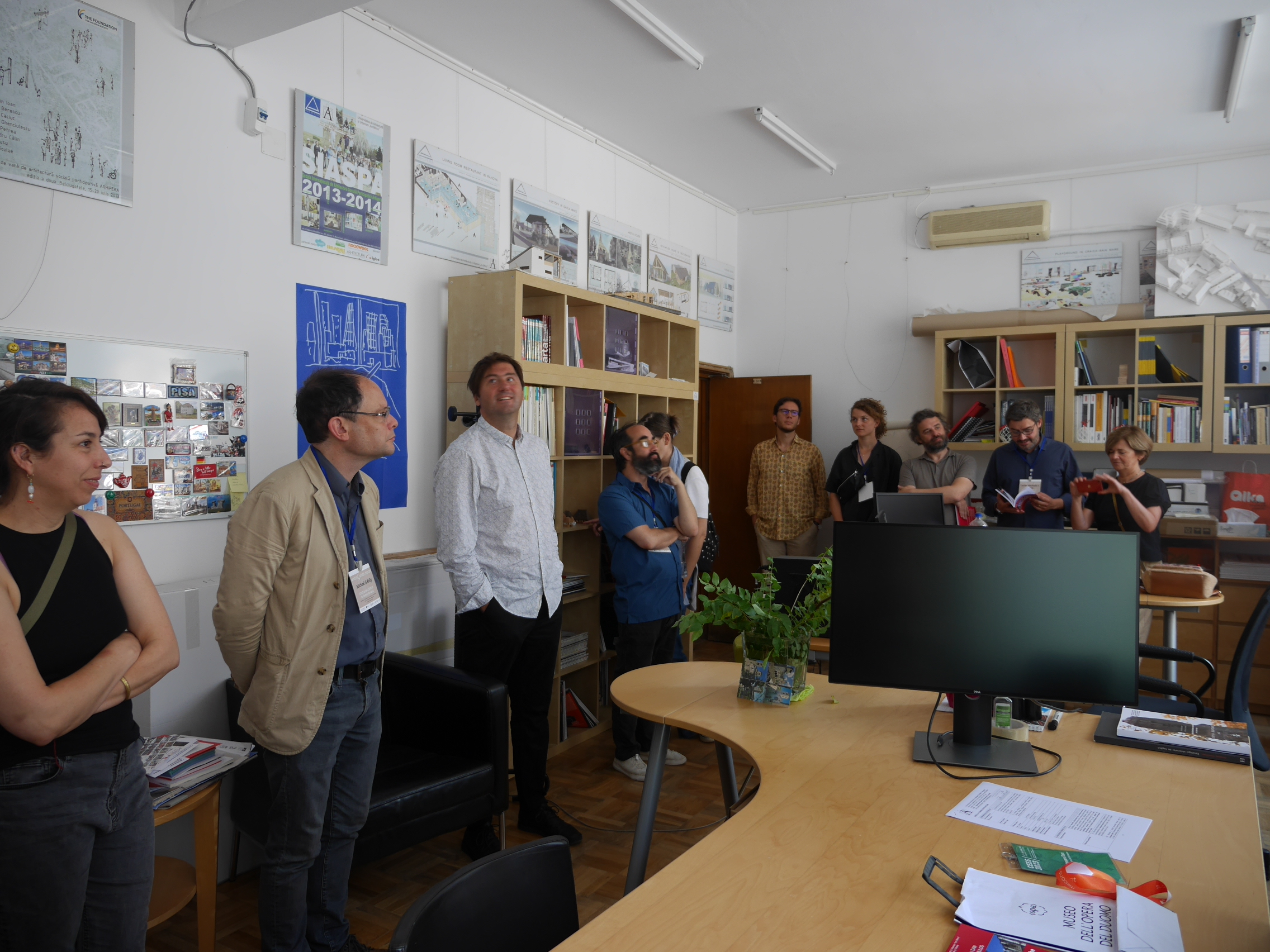
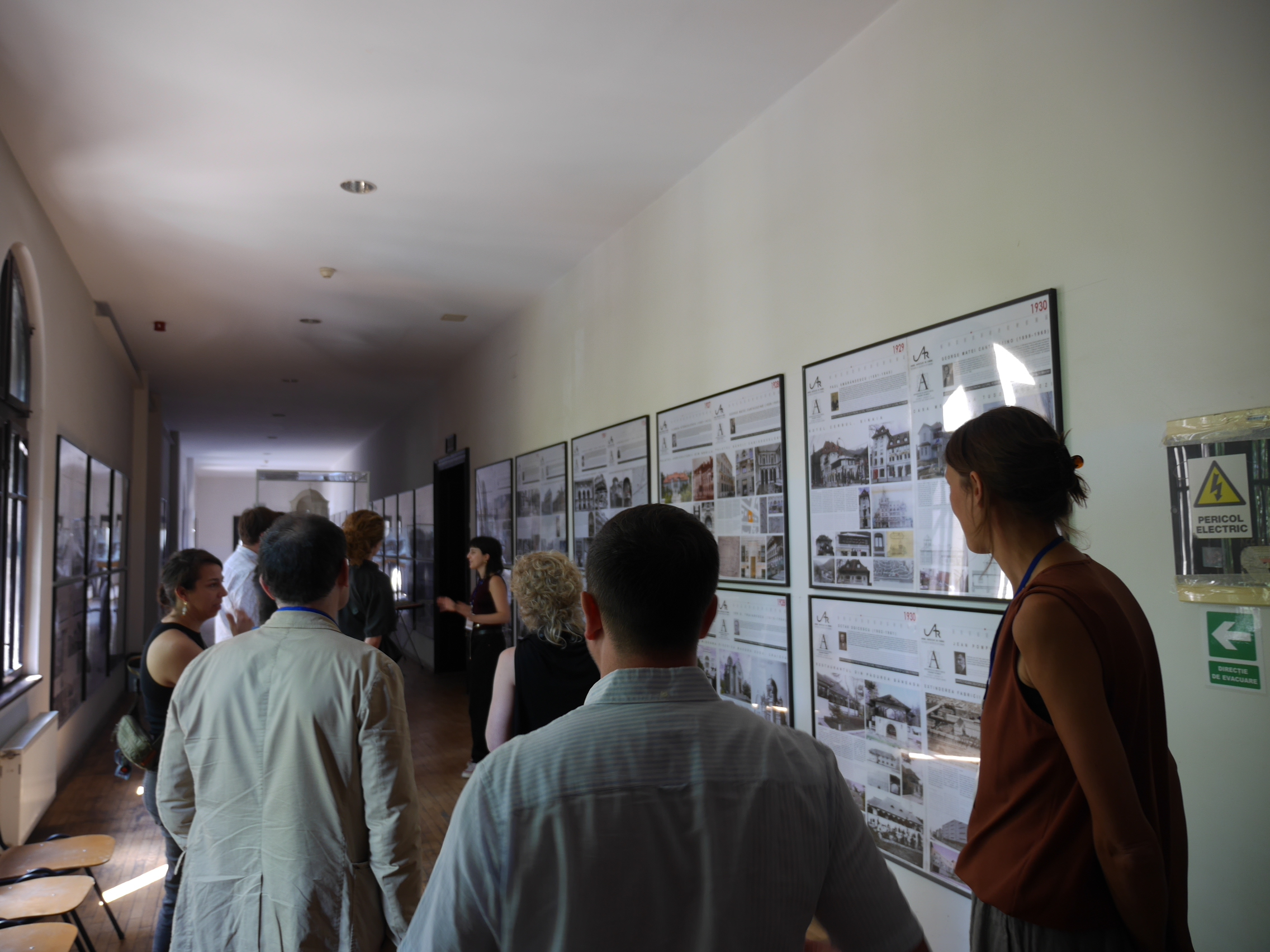
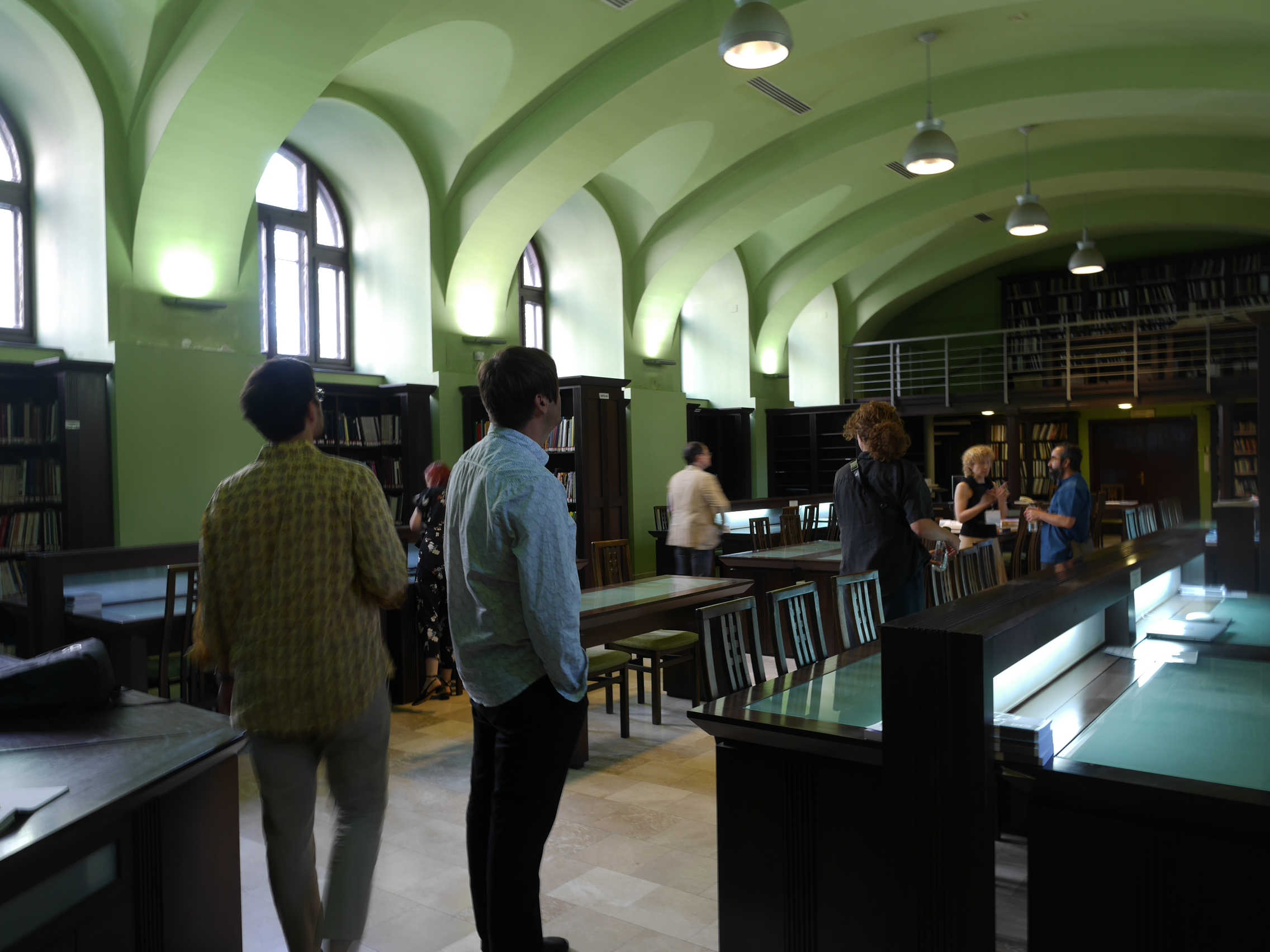
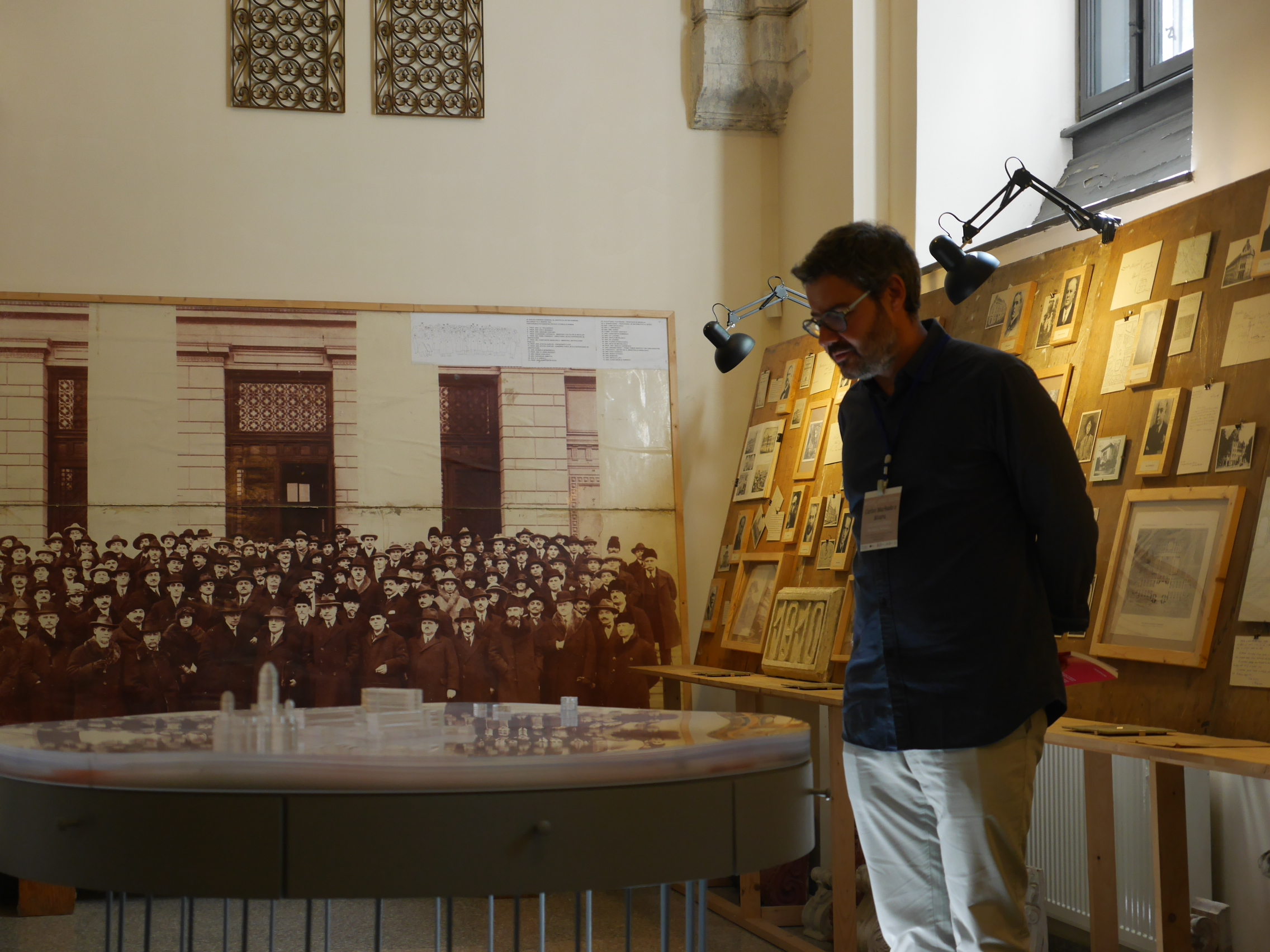
Credits: Arhipera Team (@asociatia_arhipera)
During the project presentation that took place in Bucharest, a special event was organized to showcase movies, at the Center for Architectural Culture of the Romanian Union of Architects. Working Group 1, which was in charge of scientific communication, invited several members of the Action to record their thoughts and findings in videos, following Jorge Mejía Hernández’s initiative. The goal was to use movies as a communication medium to reach a wider audience. Three movies were selected for the Bucharest Film Event, which was part of the National Biennial of Architecture – Romania’s 2023 program.
The Hundred Columns of Skopje, Antonio Paoletti
The Birth of the Quoetry Method, Tuulia Soininen and Elina Alatalo
The City that was not Supposed to be on the Map, Büşra Dilaver, Diana Malaj, Elsa Paja, Holly Dale, and Klodiana Millona
In his opening remarks, Jorge Mejía emphasized the transformative potential of films in shaping our perception of individual human beings, no matter where they may be from.
The three films have different approaches and were created within different contexts. The Hundred Columns of Skopje focuses on the changes that occurred in the city between 2010 and 2014, with the construction of new buildings, facades, and public spaces in a neoclassical style. The film is the outcome of the Cost Action STSM. The Birth of the Quoetry Method explores the perspectives of people from different backgrounds in understanding the city, based on a fieldwork event organized in Hiedanranta. Finally, The City that was not Supposed to be on the Map is one of the six captivating documentary films crafted during and after the Training School in Tirana and Kamza. It experimented with psychogeographic walks and ethnographic film as research-creation methods to explore the tension between two concepts – the planned and the unplanned, aiming to dismantle this dichotomy by looking beyond it. The movies were also presented during the well-known international film festival Dokufest in Prizren.
In all cases, be it in Skopje, Tampere, or Tirana, these videos bring down general perceptions of the scale of individual human beings and show how urban reality, in all its beautiful complexity and contradictoriness, can be grasped in the stories people tell. During the Q&A session, Silvia Niculae from the Archipera Association moderated the discussion. The session included a panel of members from the Action, who were either authors, co-organizers of training schools, or fieldwork events that resulted in films. The panelists included Willie Volgel, Elina Alatalo, Jorge Mejía, the initiator of the movie project, and Klaske Havik.
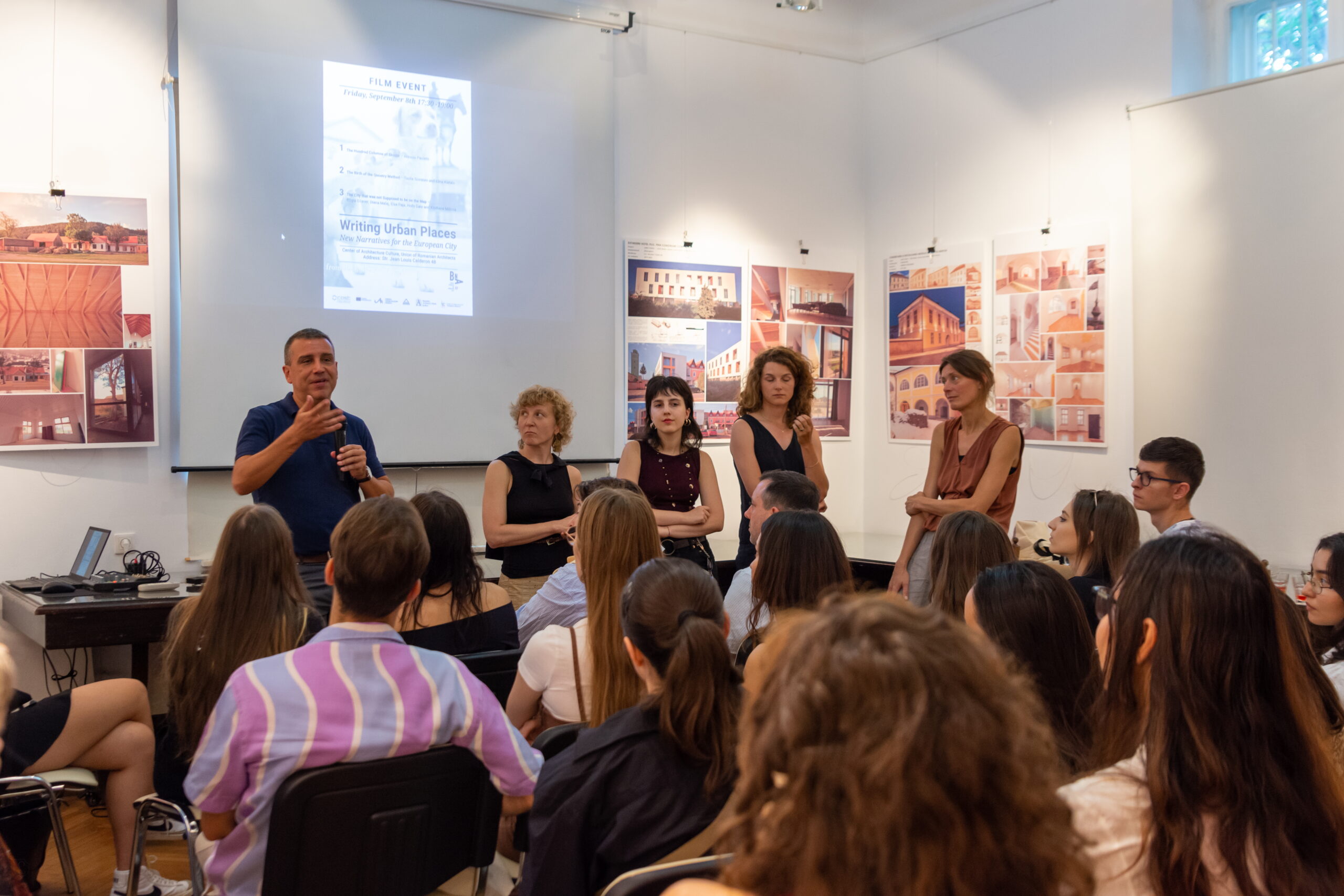
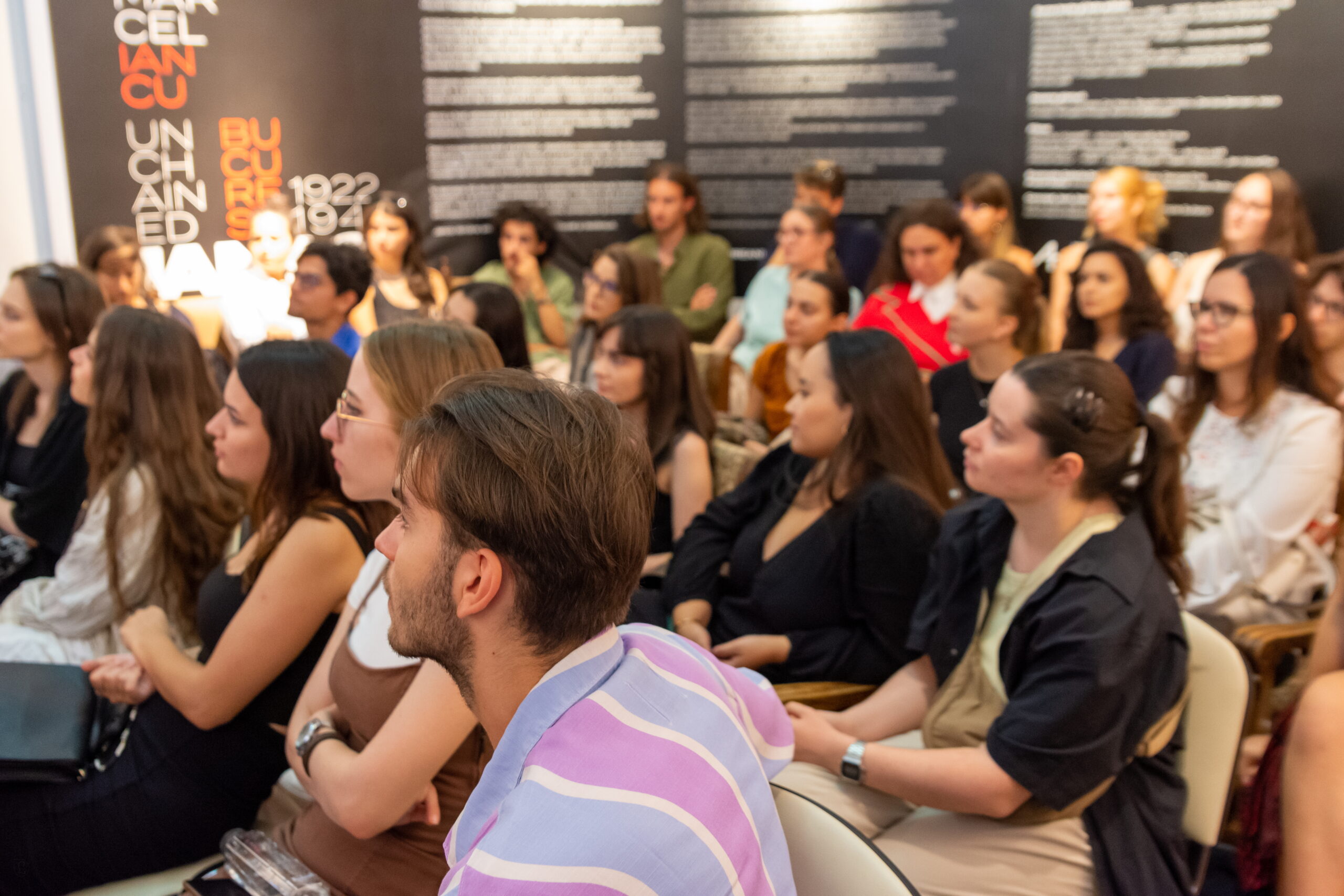
Credits: Union of Romanian Architects (Răzvan Hatea) @bienala_arhitectura
The next morning, on September 9, Casa Melik, built in the late 18th century that serves nowadays as the Museum “Theodor Pallady,” was the perfect setting for sketching ideas for future projects for the Writing Urban Places Community. The participants visited the museum and then had a brainstorming session in the Melik House’s verandah, where they discussed the future of Writing Urban Places. After the session, some of the participants visited the painter Francisc Chiuariu’s workshop, where the artist kindly welcomed the group and talked about his creative process. He also showcased a number of his projects and explained their evolution over time. Others explored the Armenian neighborhood in Bucharest.

Credits: Arhipera Team (@asociatia_arhipera)
Local Organizing Team:
Lorin Niculae, “Ion Mincu” University of Architecture and Urbanism, Arhipera Association
Silvia Niculae, “Ion Mincu” University of Architecture and Urbanism, Arhipera Association
Onorina Botezat, UCDC